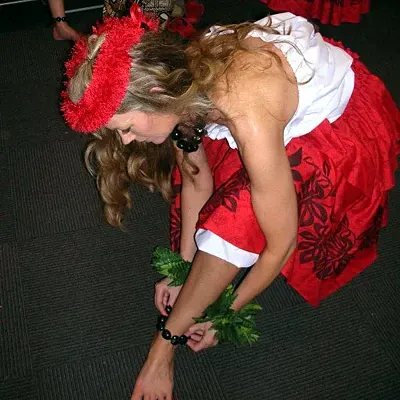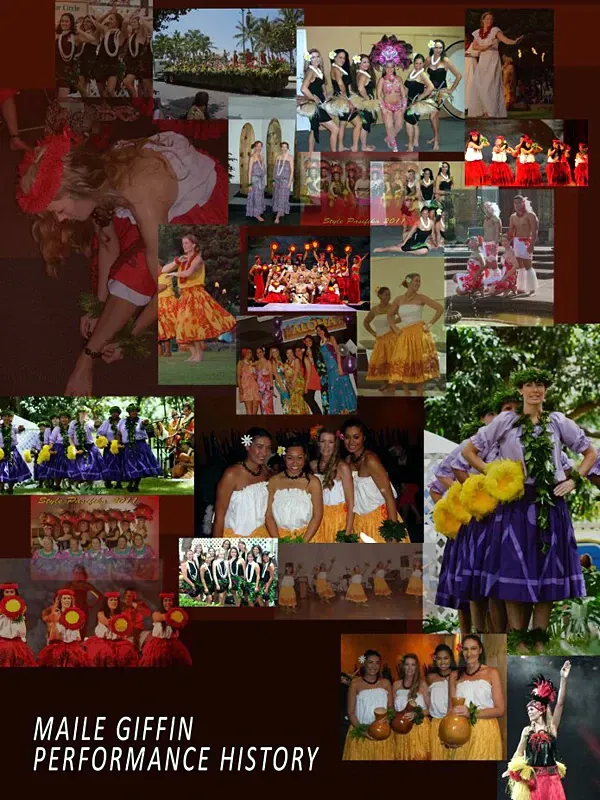Pacific Dance: Dr Maile Giffin
Written by

The Pacific Dance Choreographic Laboratory is now in its fourth year and moving from strength to strength in its aims to provide a platform for dancers and choreographers exploring the intricacies and variances of Pacific Dance in Aotearoa/New Zealand.
The Pacific Dance Choreographic Laboratory is now in its fourth year and moving from strength to strength in its aims to provide a platform for dancers and choreographers exploring the intricacies and variances of Pacific Dance in Aotearoa/New Zealand.
Each year three selected choreographers are given the opportunity to develop their works within an intensive time span. This year’s selected choreographers are: Tupua Tigafua, Nita Latu and Maile Giffin.
Here's a little about Dr Maile Giffin (one of the three selected choreographers) and her work in this year’s Laboratory.
Dr. Maile Giffin – After completing a Ph.D in Physics at the University of Otago, Maile moved to her mother’s homeland of Hawaii to take a science position on the Island of Maui. Trained as a Ballet dancer since she was a child, the move to Hawaii allowed Maile to immerse herself in Hawaiian culture, particularly in Hula and paddling (waka ama).
After five years on Maui she transferred to Oahu and joined a new Halau (Hula school), under Kumu Hula Shirley Kanemura Namakahulali Recca.
A couple of years later Maile started Tahitian dancing with Na Puakea O Koolaupoko which also trained dancers in Hula.
The exposure to three unique Halau’s gave her insight into the small but definite differences in Hula style. Maile uses these different styles of hula in her piece Changes of our Land.
Changes of Our Land
The piece starts with three islands, Niihau, Oahu and Hawaii (Big Island) in the 1700’s.
The dance depicts the chores of everyday life, spear and net fishing, taro planting, canoe building and ends with Kamehameha’s invasion of Oahu in which hundreds of warriors were backed up and over the Pali cliff to 1000 foot death drop.
We move to a new time period 1870’s, and a royal visit by Queen Kapi’olani to the island of Ni’ihau. The Queen’s visit concerned the health and well being of Hawaiian women and their babies. The chant used in this dance was written in honour of her visit. Some movements in this piece are inspired by the Royal visit of the Queen with Princess Lili’uokalani to Queen Victoria’s 50th Jubilee celebration in London 1887.
In 1959 The Hawaiian Islands became a state of America and the dancing here reflects the upbeat carefree and somewhat “cheesy” hula style of this era. We see a graduation to hula dancers looking more uniform in appearance and style.
The last song in this piece leaves us with an open question as to ‘What would the King and Queen think if they saw the changes in Hawaii’. The growth of western ideals, condominiums, hotels and Americans on Hawaiian shores, yet the Aloha spirit remains.
Maile now managers Polynesian Entertainers Limited with her husband Amo in which they train dancers to perform in Polynesian shows covering a range of islands from the South Pacific and Hawaii.
She hopes that through her work in the laboratory she will be able to develop her craft as a choreographer and move towards more works incorporating the full range of dance she has learnt over the years.
- The Pacific Dance Choreographic Lab is on Saturday, 10th November, 7pm at the Mangere Arts Centre.
